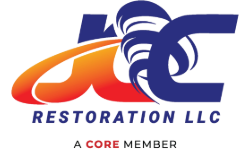Disaster Cleanup: Understanding the Basics
When a disaster strikes, the first thing you need to do is assess the situation and determine what type of cleanup is necessary. There are three main types of disaster cleanup: fire damage, water damage, and wind damage.
Fire damage cleanup is the process of removing smoke and soot from surfaces, as well as repairing any damage caused by the fire. Water damage cleanup is the process of removing water from surfaces and repairing any damage caused by the water. Wind damage cleanup is the process of repairing damage caused by the wind, such as broken windows or downed trees.
Once you have determined the type of cleanup necessary, you need to gather the proper supplies. For fire damage cleanup, you will need a vacuum with a HEPA filter, a wet/dry vacuum, gloves, goggles, and a face mask. For water damage cleanup, you will need a wet/dry vacuum, gloves, goggles, and a face mask. For wind damage cleanup, you will need gloves, goggles, and a face mask.
Once you have gathered the proper supplies, you need to follow the proper procedure for each type of cleanup. For fire damage cleanup, you need to vacuum all surfaces with a HEPA filter vacuum to remove soot and smoke. Next, you need to use a wet/dry vacuum to remove any remaining water. Finally, you need to repair any damage caused by the fire.
For water damage cleanup, you need to use a wet/dry vacuum to remove all water from surfaces. Next, you need to repair any damage caused by the water.
For wind damage cleanup, you need to repair any damage caused by the wind, such as broken windows or downed trees.
Disaster cleanup can be a daunting task, but it is important to remember the three main types of cleanup: fire damage, water damage, and wind damage. By gathering the proper supplies and following the proper procedure, you can make disaster cleanup a little bit easier.
Sources:
https://www.disastercleanupinternational.com/
